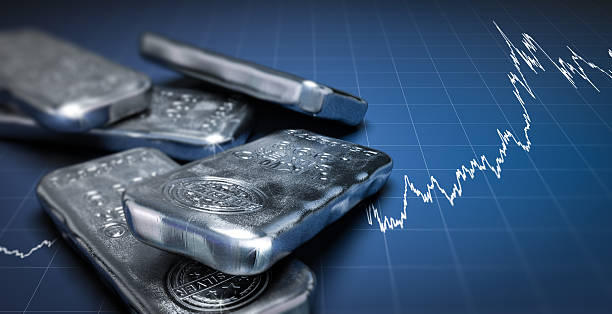For centuries, silver played a defining role in global trade, monetary systems, and economic stability, shaping the financial history of civilizations across the world. While silver is no longer used as a currency standard today, its legacy remains deeply embedded in the foundations of international commerce, inflationary cycles, and central banking policies. From the Spanish Empire’s silver-driven global trade network to the silver standard’s impact on 19th-century monetary policy and the eventual rise of fiat currencies, silver has left an enduring mark on the modern financial system. This chapter explores how the silver standard influenced global trade, inflation, and monetary policy, and why silver’s historical role remains relevant in today’s economic landscape.

1. Silver’s Impact on Global Trade: The First Global Currency
- The Silver Trade and Early Globalization
- Silver was the first truly global currency, facilitating trade between Europe, the Americas, and Asia from the 16th to 19th centuries.
- The discovery of Potosí (Bolivia) and Zacatecas (Mexico) led to a massive supply of Spanish silver, which fueled the galleon trade with China.
- The Mexican peso (real de a ocho) became the world’s most widely accepted currency, used across Europe, Asia, and the Americas.
- China’s Role in the Silver Economy
- China, the largest consumer of silver, anchored the global demand for the metal through its silver-based monetary system.
- European traders exchanged silver for Chinese goods, making silver the foundation of East-West trade until China abandoned the silver standard in 1935.
- The Shift Away from Silver and the Rise of Fiat Currencies
- As nations moved toward gold and fiat currencies in the late 19th and 20th centuries, silver’s role in trade diminished.
- However, the financial networks and trade routes created by the silver economy remained, influencing modern banking, currency exchange, and global trade structures.
2. Silver, Inflation, and Monetary Policy: Lessons from the Silver Standard Era
- The Silver Boom and Inflationary Cycles
- The mass influx of silver into Europe during the 16th and 17th centuries caused one of the first major inflationary periods in history—the Price Revolution.
- As silver flooded the markets, prices of goods rose dramatically, laying the groundwork for modern monetary theories on inflation and money supply expansion.
- This historical precedent demonstrates how excessive money supply growth can erode purchasing power, a lesson still relevant for modern central banks.
- The Deflationary Effects of the Silver Standard’s Decline
- When nations began demonetizing silver in the 19th century, silver prices fell, causing deflationary pressures in silver-based economies.
- The Crime of 1873 in the U.S. and Germany’s move to the gold standard led to economic contractions, as silver-holding populations suffered from decreasing money supply and falling wages.
- These historical deflationary shocks offer key insights into modern monetary policies—particularly the importance of flexible money supply management.
- Silver’s Role in Today’s Monetary System
- Although no longer used as currency, silver remains an inflation hedge, similar to gold, as investors turn to precious metals during economic uncertainty.
- Central banks continue to monitor commodity prices (including silver) when making decisions on interest rates and monetary expansion.
3. The Modern Financial Legacy of Silver
- Silver as a Safe-Haven Asset
- Just as silver was historically used as money, it now functions as an investment hedge against inflation and financial crises.
- The 1970s silver boom, the Hunt Brothers’ attempt to corner the market in 1980, and silver’s surge during the 2008 financial crisis all highlight its ongoing role in wealth preservation.
- Silver in Central Banking Reserves
- While most central banks hold gold reserves, some developing nations and private institutions maintain silver reserves as a secondary store of value.
- Silver’s role as legal tender in bullion coins (such as the American Silver Eagle, Canadian Silver Maple Leaf, and Chinese Silver Panda) continues its monetary tradition.
- The Continued Debate Over Metal-Backed Currency
- As concerns about fiat currency inflation grow, some economists and policymakers debate whether gold or silver could play a future role in currency stabilization.
- Cryptocurrencies, often referred to as “digital gold”, draw parallels to silver and gold’s historical role as independent, non-government-controlled money.
Conclusion: Silver’s Enduring Influence in the Modern Economy
Though the silver standard is long gone, silver’s historical influence on trade, inflation, and monetary policy continues to shape the global economy. From its role as the first international currency to its impact on inflationary cycles and financial crises, silver’s legacy offers valuable insights into modern monetary challenges. While silver is no longer a foundation of money, its investment, industrial, and financial significance remains strong, ensuring that silver’s place in global finance endures well into the 21st century.
